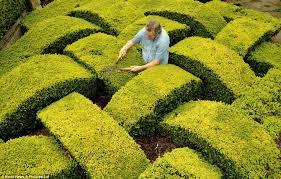Hedges are a fundamental part of the British countryside forming important wildlife corridors for a wide variety of species. However, they need regular specific management to ensure that their ecological value is maintained.
Hedges can act as a shelter and refuge for wildlife as well as a practical barrier for stock control and property owners so long as they do not grow out of control and become unsightly, cause issues with neighbours (joint responsibility) or impeding access.
Benefits for wildlife and people:
- A well managed hedge looks tidy and is aesthetically attractive where correct management maintains its purpose as a screen for privacy and an effective security barrier.
- Cutting needs to be undertaken at the right time (outside the bird nesting season, May-Aug) but this should not be reduced to the point where the hedge does not provide shelter, safe foraging and breeding opportunities.
- Correct management can increase yields of fruit; berries etc, so it is important cutting does not take place until these vital natural foods have gone.
Managing:
- Encourage a bushy and dense a hedge by cutting at least half of the new seasons growth to within 2cm of the previous year’s growth.
- Most hedge plants, such as Hawthorn, flower and fruit on the previous year’s growth, therefore, cut only a proportion each year to maintain an annual cycle of flowering and fruiting.
- Taper the sides of the hedge towards the top, so in cross-section it resembles a flat-topped ‘A’. This allows light and rainwater to reach the lower foliage as well as the ground at the base.
- Old, gappy hedges can be rejuvenated by laying or by coppicing. Cut stems to within 10–15 cm of the ground. Fresh growth developing from the base creates a dense hedge with correct trimming.
- Dead and decaying wood is an important resource for wildlife. Leave any cuttings discreetly in the base of the hedge or a nearby shrub bed.
- Do not cut hedges during the breeding season, usually but not exclusively between March and August. It is an offence under Section 1 of the Wildlife and Countryside Act of 1981 intentionally to take damage or destroy the nest of any wild bird while it is in use or being built.
For more advice contact: Conservation-advice@rspb.org.uk
